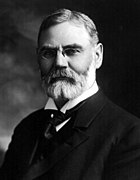| |||||||||||||||||||||||||||||||||||||||||||||||||||||||||||||||||||||||||||||||||||||||||||||||||||
All 435 seats in the United States House of Representatives 218 seats needed for a majority | |||||||||||||||||||||||||||||||||||||||||||||||||||||||||||||||||||||||||||||||||||||||||||||||||||
|---|---|---|---|---|---|---|---|---|---|---|---|---|---|---|---|---|---|---|---|---|---|---|---|---|---|---|---|---|---|---|---|---|---|---|---|---|---|---|---|---|---|---|---|---|---|---|---|---|---|---|---|---|---|---|---|---|---|---|---|---|---|---|---|---|---|---|---|---|---|---|---|---|---|---|---|---|---|---|---|---|---|---|---|---|---|---|---|---|---|---|---|---|---|---|---|---|---|---|---|
| |||||||||||||||||||||||||||||||||||||||||||||||||||||||||||||||||||||||||||||||||||||||||||||||||||
 Results: Democratic hold Democratic gain Republican hold Republican gain Progressive hold Progressive gain Independent hold Prohibition gain Socialist gain | |||||||||||||||||||||||||||||||||||||||||||||||||||||||||||||||||||||||||||||||||||||||||||||||||||
| |||||||||||||||||||||||||||||||||||||||||||||||||||||||||||||||||||||||||||||||||||||||||||||||||||
1914 United States House of Representatives elections were elections for the United States House of Representatives to elect members to serve in the 64th United States Congress. They were held for the most part on November 3, 1914, while Maine held theirs on September 14. They were held in the middle of President Woodrow Wilson's first term.
The opposition Republican Party had recovered from the split they underwent during the 1912 presidential election, and the party gained more than 60 seats from the Democratic Party, though not enough to regain control of the body. The burgeoning economy greatly aided Republicans, who pushed for probusiness principles and took credit for the success that had been reached in the industrial sector. Many progressive Republicans rejoined the Republican Party, but six remained under the Progressive Party banner in the new Congress. In addition, William Kent was re-elected in California's 1st congressional district as an independent, and two minor party candidates were elected: Charles H. Randall, a Prohibition Party member, in California's 9th congressional district; and Meyer London, a Socialist Party member, in New York's 12th congressional district.
The election was the first of four times in the 20th century in which either party won the House majority without winning the popular vote, with the subsequent three instances occurring in 1942, 1952, and 1996; Democrats won the House majority without winning the popular vote in the former election, while Republicans did so in the latter two.[3][4]
Cite error: There are <ref group=lower-alpha> tags or {{efn}} templates on this page, but the references will not show without a {{reflist|group=lower-alpha}} template or {{notelist}} template (see the help page).
- ^ a b c d e "Party Divisions of the House of Representatives* 1789–Present". Office of the Historian, United States House of Representatives. Retrieved May 18, 2015.
- ^ a b c d e Martis, pp. 168–169.
- ^ Wang, Sam (February 2, 2013). "The Great Gerrymander of 2012". The New York Times. Retrieved May 29, 2013.
- ^ "In 1996, House Democrats also won the popular vote but remained in the minority (kind of)". Washingtonpost.com. November 12, 2012. Retrieved December 3, 2012.


